Contents
Guide
RECIPES & TECHNIQUES FOR MAKING
& USING BRINED FRUITS & VEGETABLES
GRACE PARISI

2016 Quarto Publishing Group USA Inc. First published in the United States of America in 2016 by Quarry Books, an imprint of Quarto Publishing Group USA Inc. 100 Cummings Center Suite 406-L Beverly, Massachusetts 01915-6101 Telephone: 978.282.9590 Fax: 978.283.2742 QuartoKnows.com Visit our blogs at QuartoKnows.com All rights reserved. No part of this book may be reproduced in any form without written permission of the copyright owners. All images in this book have been reproduced with the knowledge and prior consent of the artists concerned, and no responsibility is accepted by producer, publisher, or printer for any infringement of copyright or otherwise, arising from the contents of this publication. Every effort has been made to trace the copyright holders and ensure that credits accurately comply with information supplied.
We apologize for any inaccuracies that may have occurred and will resolve inaccurate or missing information in a subsequent reprinting of the book. Digital edition published in 2016 Digital edition: 978-1-63159-205-8
Hardcover edition: 978-1-63159-144-0 Library of Congress Cataloging-in-Publication Data available Cover and Book Design: Rita Sowins / Sowins Design Photography: Glenn Scott Photography, except for pages by Shutterstock
PREFACE

When I was approached to write this book, my initial thought was, Quick Pickles?
Really? Sure, I like making pickles, but is there enough variety to fill a book? And, if so, how can I make
this book different from every other pickle book out there? Well, of course, upon greater consideration, I realized, yeah, there are a
ton of pickles to fill a book. And, what sets
this one apart from the rest is the discovery, along the way, of how pervasive pickles are in everyday cooking. This isnt merely a pack-your-cukes-into-a-jar-end-of-story kind of story. Rather, its a how-to-showcase-all-those-delicious-pickles-that-youve-just-made kind of storypickle juice included.
Thats the story I wanted to tell.
Heres one scenario: Youve made a batch or two of awesome pickles, and maybe eaten a good portion of them. But theres about half a jar of stragglers and all that tangy pickle juice left. Do you toss it to make room for something else in your fridge? I certainly hope not. Chop some dill pickles and add them and some brine to a . These are just a few of the recipes that use pickles and their brine to create a completely new dish. Then there are the myriad ways to use the pickles themselves: Cram some into whipped cream and crushed meringues for an awesome Eton mess.
One other thing I wanted to point out is that in these pickle recipes, the brine is as important as the produce. And, in many cases, the brine is the star of another, separate recipe. The . Both totally unexpected and totally delicious. Unlike the pickleback (a shot of pickle juice after a shot of whiskey) the pickles here arent an afterthought, a side-attraction, or a dare. Theyre the main eventand the only dare is to make them and not love them.
I hope youll try to prove me wrong.
FOREWORD

Ive written seventeen cookbooks. Some of my books have taken years to write, with extensive research and many recipes. Others are smaller, single-subject recipe books. My first book
From Tapas to Meze was my firstborn and continues to hold me by the heartstrings. My most recent book,
Kitchen Gypsy: Recipes and Stories from a Lifelong Romance with Food has been a pure passion project near and dear to my soul.
And its Grace Parisi I have to thank for bringing me into this most recent project. Let me back up a little bit! Ive known Grace for years. At first, it was her sound reputation I knew from her years working at Food & Wine magazine. Like everyone, I held her name with the highest regard. A few years later, I met Grace in person when we worked on a story together for the magazine. She was everything Id heardsmart and talented.
I hadnt seen Grace for a while, and then a couple of years ago we sat together at an industry dinner in Chicago. You two should do a book together, Grace said as she generously introduced me to the editor-in-chief at Oxmoor House. Thats how Kitchen Gypsy began, and what transpired was magical. Grace and I worked closely on my book. She traveled to San Francisco several times to test recipes and style the recipes. As we worked side by side, I marveled at her creativity, patience, perseverance, and genuine congeniality.
What Grace brings to the table every time she jumps into a project is her intelligence, expertise, and passion. Take this book about pickles, for example. Reading the recipes will make you want to run into your kitchen and cook up a batch of Pickled Plum Tomatoes with Chipotle, Spicy Bread-and-Butter Pickles, or Lime-Chile Pickled Pineapple! And thats what a good cookbook is supposed to do, right? JOANNE WEIR
Chef, teacher, television personality,
and James Beard Awardwinning cookbook author
GETTING STARTED

 Salt:
Salt: Some picklers insist on using pickling salt (pure sodium chloride) in their recipes because it doesnt contain additives such as potassium iodide, dextrose, and calcium silicate (an anti-caking agent which can sometimes make the brine cloudy). Pickling salt is not widely available and sometimes needs to be ordered online. The recipes in this book all use kosher salt, which is readily available and doesnt have additives.
Vinegar: Most commercial vinegars have acidity levels of 5 to 7 percent, which is perfect for pickling.
Vinegar: Most commercial vinegars have acidity levels of 5 to 7 percent, which is perfect for pickling.



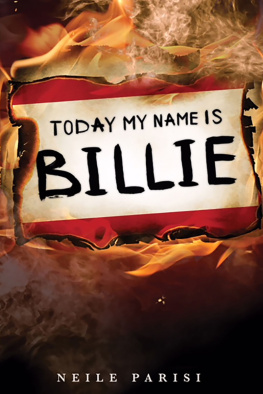
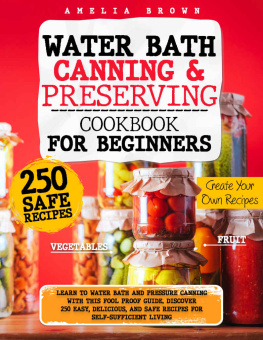
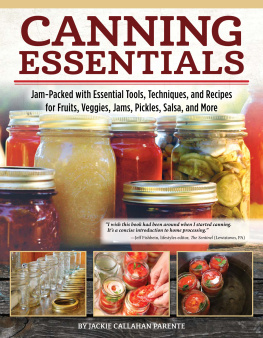
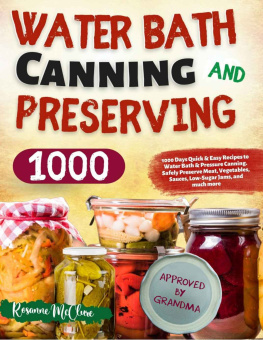
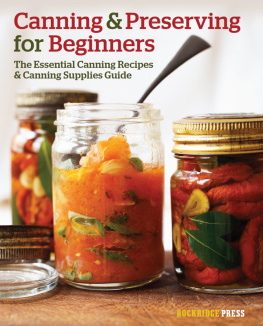
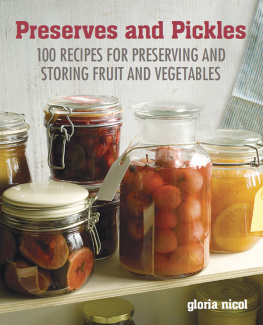
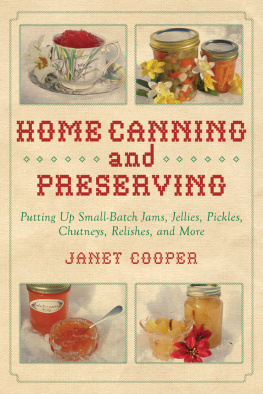
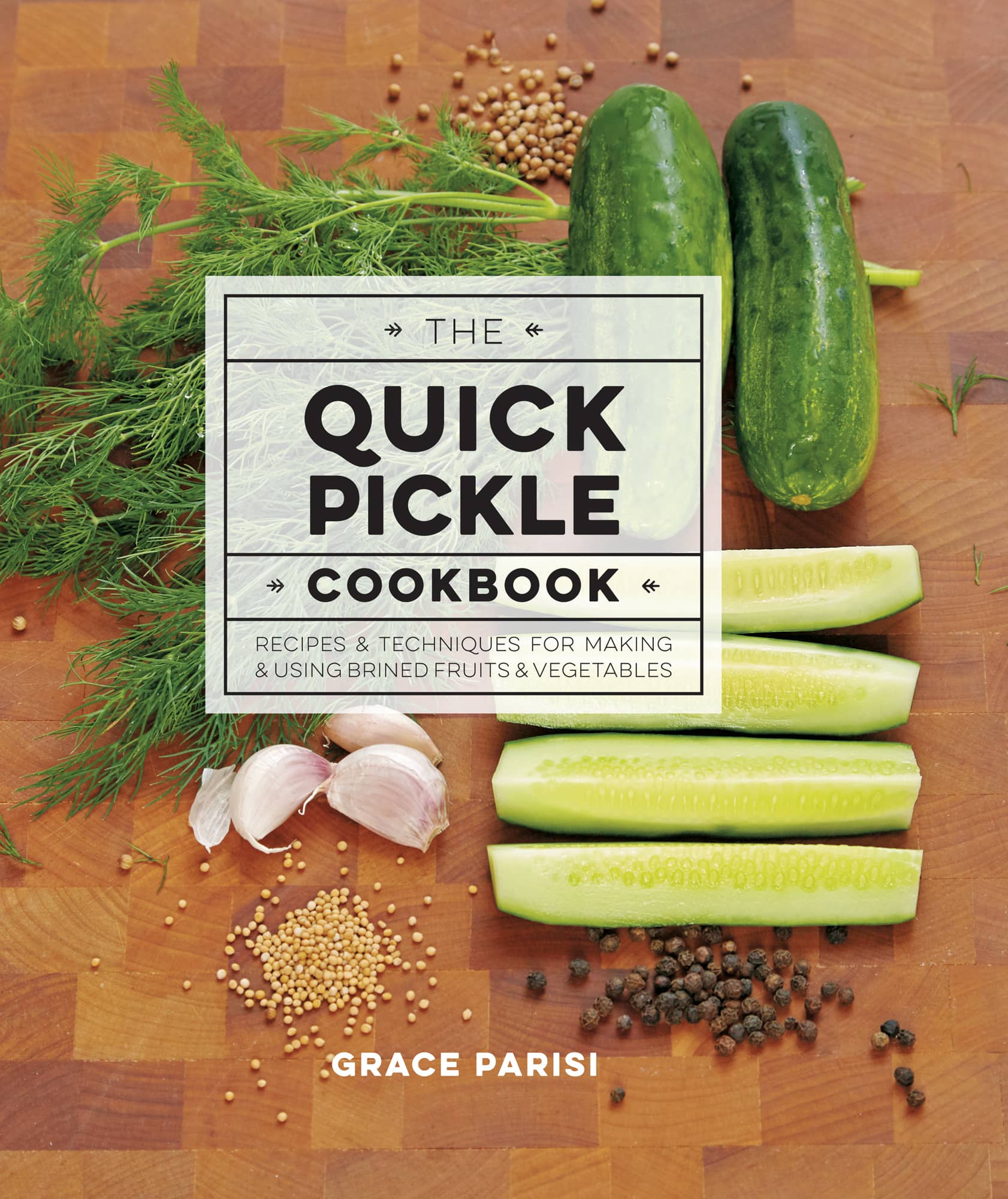

 THE
THE 

 2016 Quarto Publishing Group USA Inc. First published in the United States of America in 2016 by Quarry Books, an imprint of Quarto Publishing Group USA Inc. 100 Cummings Center Suite 406-L Beverly, Massachusetts 01915-6101 Telephone: 978.282.9590 Fax: 978.283.2742 QuartoKnows.com Visit our blogs at QuartoKnows.com All rights reserved. No part of this book may be reproduced in any form without written permission of the copyright owners. All images in this book have been reproduced with the knowledge and prior consent of the artists concerned, and no responsibility is accepted by producer, publisher, or printer for any infringement of copyright or otherwise, arising from the contents of this publication. Every effort has been made to trace the copyright holders and ensure that credits accurately comply with information supplied.
2016 Quarto Publishing Group USA Inc. First published in the United States of America in 2016 by Quarry Books, an imprint of Quarto Publishing Group USA Inc. 100 Cummings Center Suite 406-L Beverly, Massachusetts 01915-6101 Telephone: 978.282.9590 Fax: 978.283.2742 QuartoKnows.com Visit our blogs at QuartoKnows.com All rights reserved. No part of this book may be reproduced in any form without written permission of the copyright owners. All images in this book have been reproduced with the knowledge and prior consent of the artists concerned, and no responsibility is accepted by producer, publisher, or printer for any infringement of copyright or otherwise, arising from the contents of this publication. Every effort has been made to trace the copyright holders and ensure that credits accurately comply with information supplied. 
 When I was approached to write this book, my initial thought was, Quick Pickles? Really? Sure, I like making pickles, but is there enough variety to fill a book? And, if so, how can I make this book different from every other pickle book out there? Well, of course, upon greater consideration, I realized, yeah, there are a ton of pickles to fill a book. And, what sets this one apart from the rest is the discovery, along the way, of how pervasive pickles are in everyday cooking. This isnt merely a pack-your-cukes-into-a-jar-end-of-story kind of story. Rather, its a how-to-showcase-all-those-delicious-pickles-that-youve-just-made kind of storypickle juice included. Thats the story I wanted to tell.
When I was approached to write this book, my initial thought was, Quick Pickles? Really? Sure, I like making pickles, but is there enough variety to fill a book? And, if so, how can I make this book different from every other pickle book out there? Well, of course, upon greater consideration, I realized, yeah, there are a ton of pickles to fill a book. And, what sets this one apart from the rest is the discovery, along the way, of how pervasive pickles are in everyday cooking. This isnt merely a pack-your-cukes-into-a-jar-end-of-story kind of story. Rather, its a how-to-showcase-all-those-delicious-pickles-that-youve-just-made kind of storypickle juice included. Thats the story I wanted to tell.  Salt: Some picklers insist on using pickling salt (pure sodium chloride) in their recipes because it doesnt contain additives such as potassium iodide, dextrose, and calcium silicate (an anti-caking agent which can sometimes make the brine cloudy). Pickling salt is not widely available and sometimes needs to be ordered online. The recipes in this book all use kosher salt, which is readily available and doesnt have additives. Vinegar: Most commercial vinegars have acidity levels of 5 to 7 percent, which is perfect for pickling. Vinegar: Most commercial vinegars have acidity levels of 5 to 7 percent, which is perfect for pickling.
Salt: Some picklers insist on using pickling salt (pure sodium chloride) in their recipes because it doesnt contain additives such as potassium iodide, dextrose, and calcium silicate (an anti-caking agent which can sometimes make the brine cloudy). Pickling salt is not widely available and sometimes needs to be ordered online. The recipes in this book all use kosher salt, which is readily available and doesnt have additives. Vinegar: Most commercial vinegars have acidity levels of 5 to 7 percent, which is perfect for pickling. Vinegar: Most commercial vinegars have acidity levels of 5 to 7 percent, which is perfect for pickling.